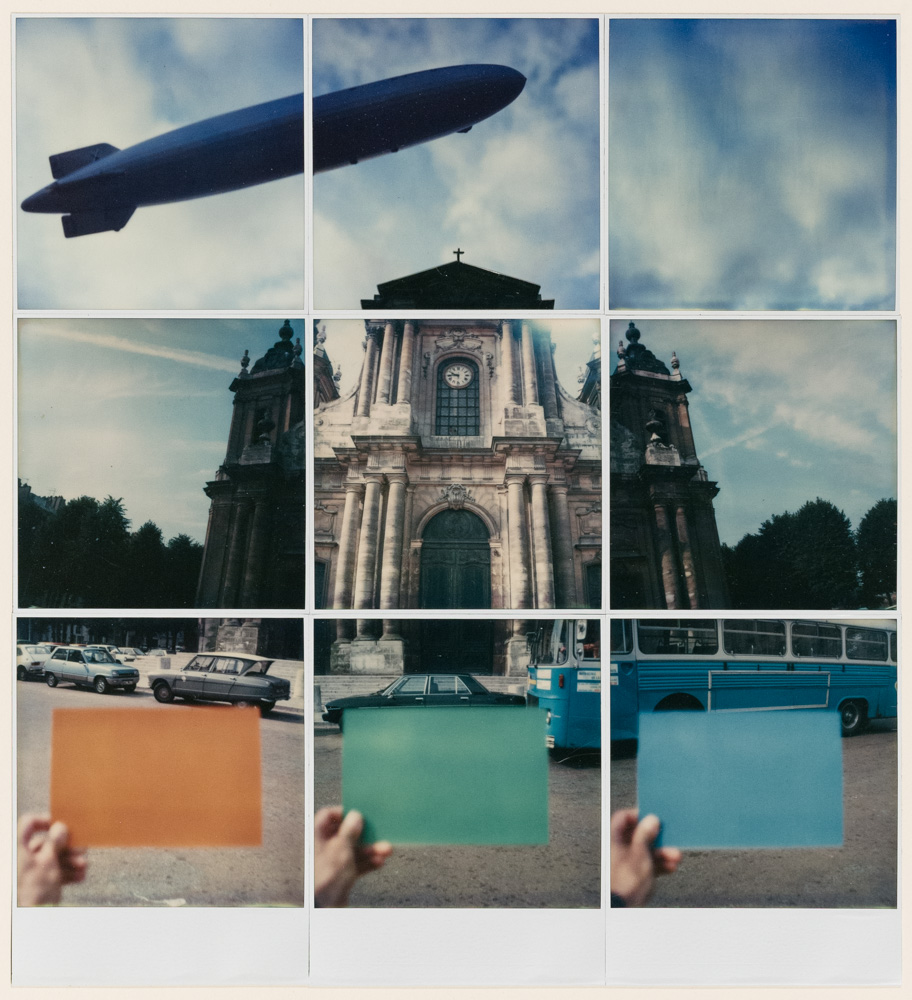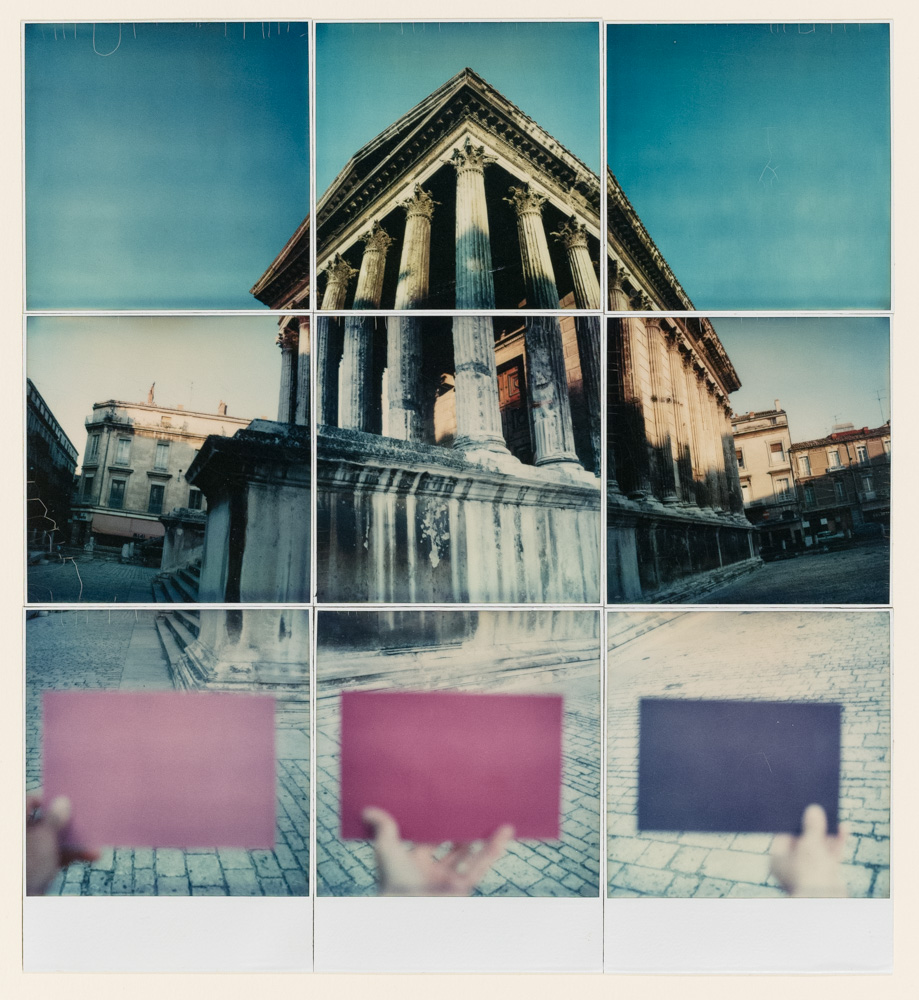Patrick Nagatani
Colorful Cathedrals (1980-1983)
Here Nagatani addresses color print, emotion, color, design, composition, magic and other interests that he pursued throughout his career.
“Nine Polaroid SX-70 images are originally taken. The SX-70’s afford a system to construct the representational qualities of the building and other formal structures in the surrounding environment. I like dealing with the lenticular problems and subsequent visual clarification through the combination of nine juxtapositioned images. The “reality” is defined but distorted and highly improbable because of the “wide-angle” effect of each single SX-70. I work with hue changes by camera manipulation, understanding about the quality of existing light and by heating or cooling the Polaroid packs; Also, most Polaroid packs seem inherently different and inconsistent in final color rendition. Finally, with the SX-70’s, I feel that I am working within a systemized methodology, basically unworkable, often predictable and precious as to scale and uniqueness.
By copying the SX-70’s with a medium format transparency film and subsequently making Cibachrome color prints, I am dealing with another photo-mechanical removal of the original object from its source. The Cibachromes intrigue me because they tend to express the constant variables of the photo-mechanical processes inherent to color film, effects of light, and color prints. Prints with a high saturation of color and strong contrast. The color change from SX-70 to copy transparency film to Cibachrome print is evident. Enlargement and variations in the printing through filter choices allow me to further alter color. A mechanical system changes with a high degree of control. The implications of the work as relating to an artist dealing with possibilities using the photo-mechanical processes are varied, easily controlled with an element of chance and fairly interesting.
At this point, I feel that I am dealing with the essence of the work. The “larger” prints allow me to deal with form and detail. The nine large connected prints seem to enhance exploration and a freer hand in application of colors. Forms are more defined and selections for color expression and symbolism, application and reworking of relationships of colors are better directed.
The context of the objects are more importantly the reworked images within this body of work (Medieval cathedrals and Roman monuments) are loaded with historical symbolism and religious spiritualistic meaning. For me, the selected surface color alterations produce objects of magical qualities, possessing arranged coherent colors and a new found visual meaning.
The nature of applying color to the systematized photographic image seems to allow for emotional yet controlled statement. I enjoy the idea of bombarding these grey/brown artifacts with colors high in symbolic meaning and dominant enough to change visual form and alter space. The notion of the church admonishing anything “magical” as a heretical foundation intrigues me. The color cards function as both the magician’s or alchemist’s (alchemy-a power or process of transforming something common into something precious) tool for dictating and altering color.” [www.patricknagatani.com]

Untitled Colorful Cathedral, Ca. 1980

Untitled Colorful Cathedral 2, Ca. 1980